
© Stephen Wright. (Click image for larger version)
Les Ballets de Monte Carlo
Roméo et Juliette
London, Coliseum
23 April 2015
Gallery of pictures by Stephen Wright
www.balletsdemontecarlo.com
Jean-Christophe Maillot, artistic director of the Monte Carlo Ballet company, brought his 1996 production of Roméo et Juliette to London for the first time, shortly after Northern Ballet acquired it, when DanceTabs reviewed its premiere in Edinburgh. At the Coliseum, the first cast lovers were Noelani Pantastico and Lucien Postlewaite, who had performed it with Pacific Northwest Ballet (DanceTabs review) before changing companies and countries.
Both are plausible as innocent youngsters falling headily in love with no thought for the consequences. Just why the consequences are so dire is uncertain in this ‘timeless’ balletic setting, very different from Shakespeare’s Verona. There are no warring clans – just excitable street fighters without any authority figures to control them (or to exile Romeo). Fatherless Juliet is required by her domineering mother to marry Paris, after a masked ball or orgy at which everyone behaves outrageously.
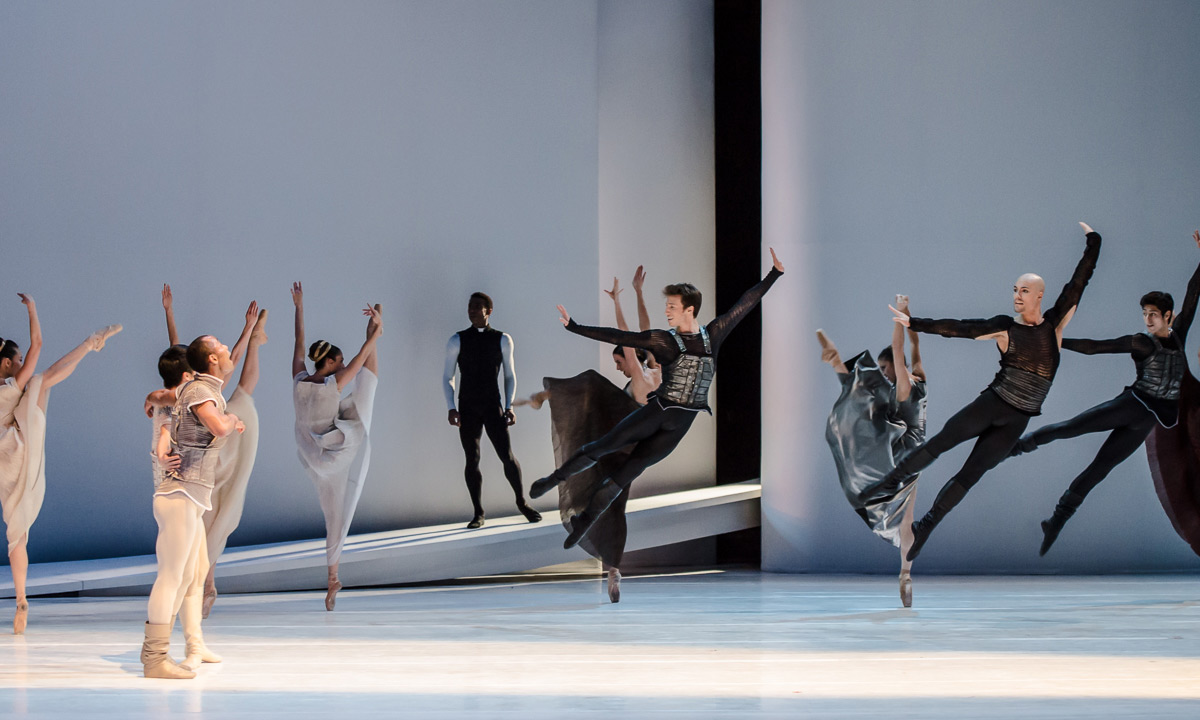
© Stephen Wright. (Click image for larger version)
Maillot’s Roméo et Juliette reduces Shakespeare’s poetic play to a graphic novel, illustrating every emotion in bold outlines. His choreography is highly stylised, the dancers carving out dramatic shapes and pausing (briefly) in picturesque tableaux against the stark planes of the set. They gesticulate as exaggeratedly as the marionettes in the puppet show that takes place to Prokofiev’s mandolin music.
Though the action is rhythmical, with brawling set pieces in slow motion to hectic music, there’s no linking grammar for the steps. Characters cover a lot of ground, leaping and twisting, flinging legs high, semaphoring literal gestures: lots of breast and crotch grabbing, hand, arm and leg kissing. Mercutio (George Oliveira), an acrobatic rogue, molests every female he sees, including Maude Sabourin’s randy Nurse. Bad, bald Tybalt (Alvaro Prieto) bashes Mercutio to death with a puppet club, then is suffocated by Romeo with a blood-stained cloth. The violence is crude cartoon stuff, the love-making almost as basic in its striving for bliss.

© Stephen Wright. (Click image for larger version)
Postlewaite’s Romeo is puppyish in his infatuation with Pantastico’s determined Juliet. When she commands him to kiss her in the balcony scene, he almost faints in delight. On their stolen wedding night, she slaps his hang-dog face, grabs him to her and collapses into his arms. Passing references to Shakespeare’s erotic imagery, palms and arms entwined, are overwhelmed by graphic groping. Because the two dancers are so involved in their roles, their antics are endearing – and we laugh in recognition and sympathy, knowing the lovers are doomed.
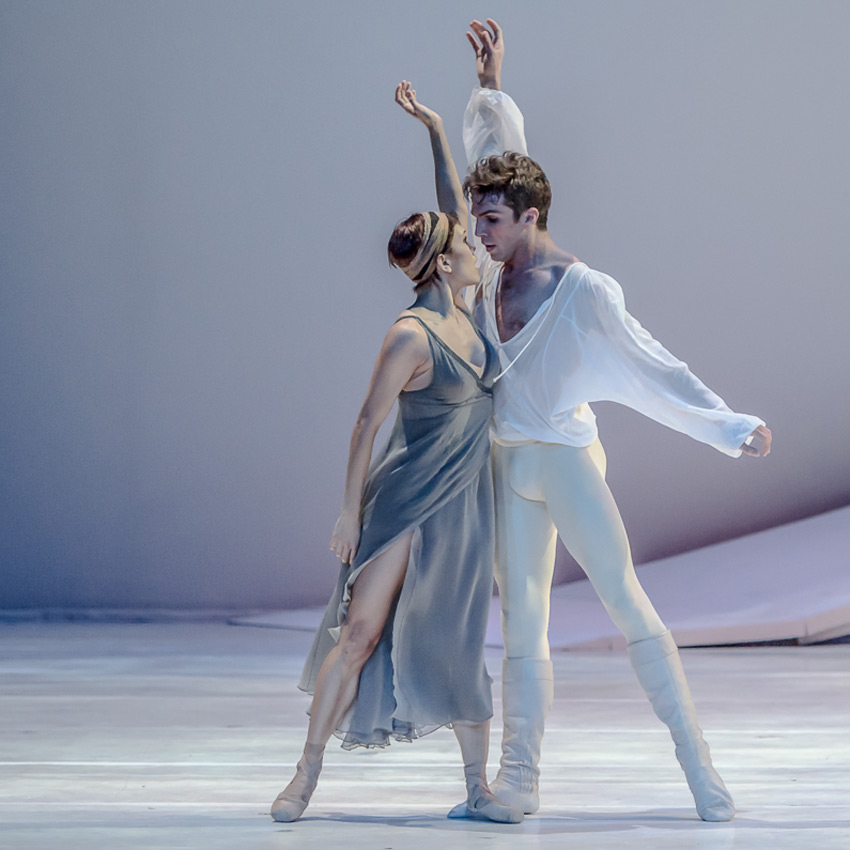
© Stephen Wright. (Click image for larger version)
In fact, the tragedy is all Friar Laurence’s fault. The ballet is all about him and his remorse. He should never have married them, never have given Juliet the potion. Alexis Oliveira, identifiable as a priest by his dog collar, agonises in flashback with the assistance of two acolytes. They are his conscience, his fate and Juliet’s. He hangs between them as if crucified, is in their thrall like the Prodigal Son with the grotesque servants in Balanchine’s 1929 ballet.

© Stephen Wright. (Click image for larger version)
It’s an interesting angle on an all-too-familiar tale. The overwrought emotions and physical strainings for effect might be interpreted as Friar Laurence’s fevered recollection of how and why it all went wrong. He sees himself as Nosferatu, responsible for multiple deaths, and Lady Capulet (April Ball, in Martha Graham murderess mode) as his evil female twin. But it all goes silly at the end, when Juliet, awakening from her coma, snuggles up to her saintly would-be-saviour as if on her marital bed. Friar Laurence’s motives suddenly seem suspect: he did the drugging, robbing Juliet of her choice to ‘die’ for Romeo.
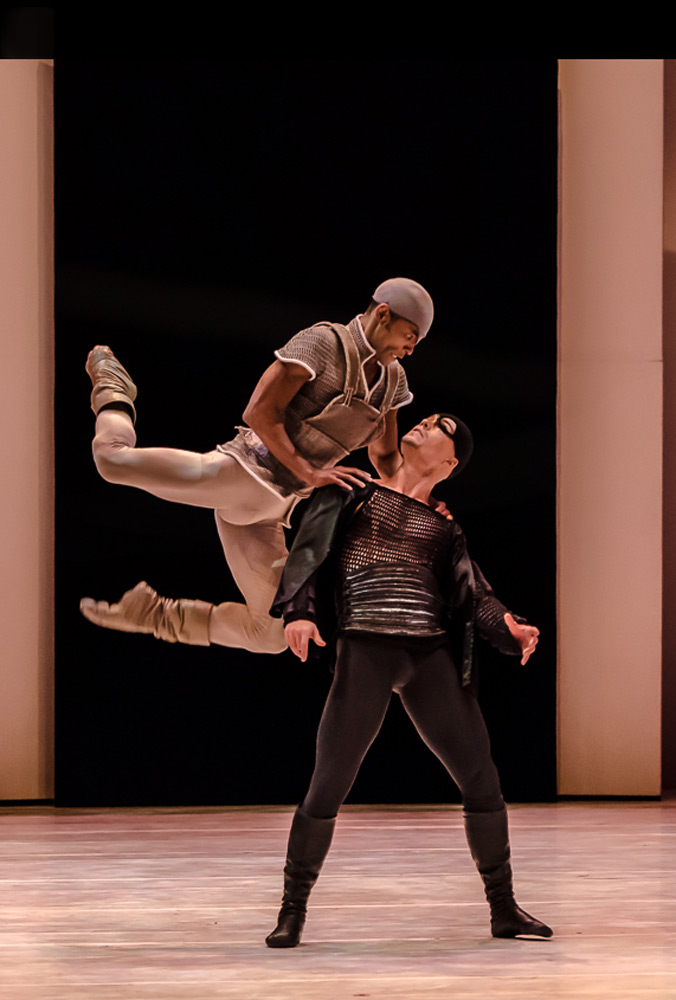
© Stephen Wright. (Click image for larger version)
Romeo has already tried mouth-to-mouth resuscitation on her, apparently in vain, before collapsing lifeless, somehow. Juliet strangles herself with a symbolic scarf she pulls from his entrails. By doing without weapons of any kind, Maillot has made his characters’ tragically pointless deaths ludicrous. Lurking behind the lovers’ corpses, cowering in the corner, is Friar Laurence, overcome by guilt, with no reconciliation of feuding families to console him.
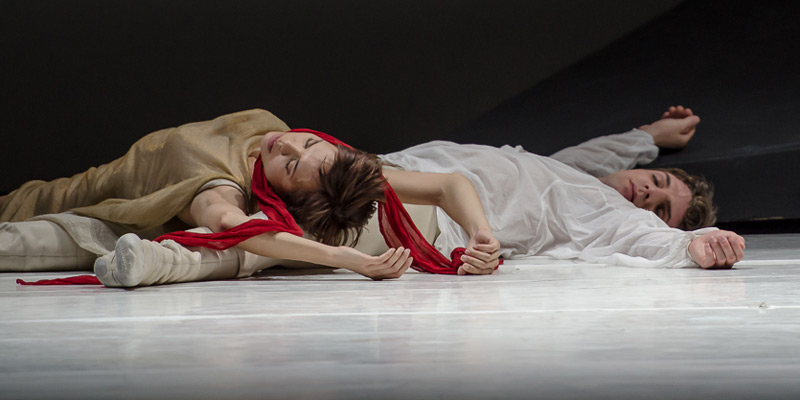
© Stephen Wright. (Click image for larger version)
The ballet’s staging has undeniable impact, aided by a rousing recording of Prokofiev’s filmic score. The plain white set, by Ernest Pignon-Ernest, is effective, a ramp at the back serving as an entrance to the town square and as Juliet’s balcony. The stage picture throughout is animated with vivid movement, simplifying an old story in the broadest of fairly modern terms. As a starter ballet, this Romeo and Juliet might encourage sceptics to move on to more complex interpretations of Shakespeare’s play, and discover why it continues to challenge producers, choreographers and performers.












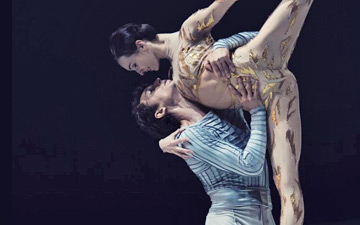
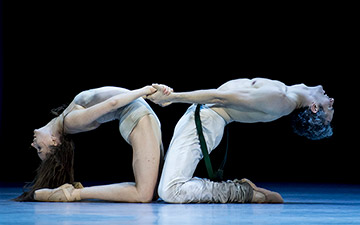

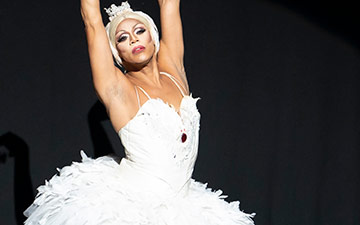
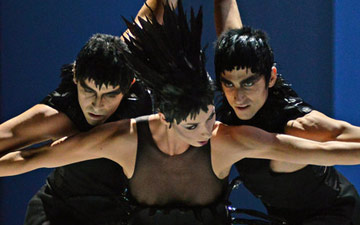
You must be logged in to post a comment.